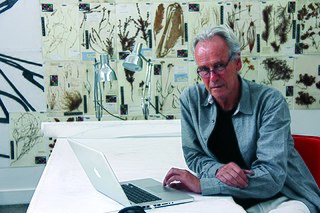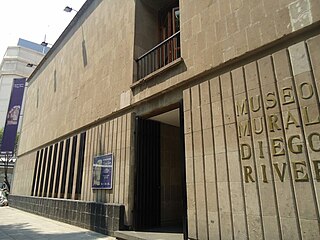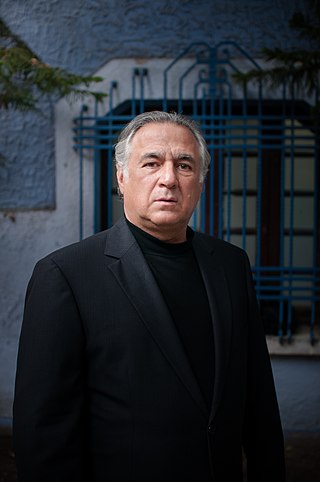
Cesar Balsa (1923–2007) was a Spanish-born hotelier and restaurateur who worked in the hotel and restaurant industry in Mexico in the 1950s and 1960s.[ clarification needed ]

Cesar Balsa (1923–2007) was a Spanish-born hotelier and restaurateur who worked in the hotel and restaurant industry in Mexico in the 1950s and 1960s.[ clarification needed ]
He was the only child of Elisa Carralero and Antonio Balsa, a Spanish barber.
At the age of twelve he started his career as a bellhop at a Spanish hotel. Over the course of ten years, he worked his way up to restaurant management and hotel operation, and at age 21 was appointed General Manager of Food and Beverage Services [1] at the Palace Hotel in Madrid. [2]



In 1948, he emigrated to Mexico City, Mexico, and went on to become the head of the hotel and restaurant conglomerate Nacional Hotelera S.A., which included The Presidente Hotel chain in Mexico. [3] Among them, the first air-conditioned luxury hotel in Acapulco [2] and Cozumel, as well as several popular restaurants and night clubs such as Can-Can and Focolare, [3] in Zona Rosa.
In 1958, Balsa signed a contract to operate the Prado-Alfer Hotel in Mexico City; in 1960, he acquired the Hotel Del Prado, then the largest hotel in Mexico. [4] When he took over the Hotel De Prado, the dining room had a 1946–1947 mural, Sueño de una Tarde Dominical en la Alameda Central (Dream of a Sunday Afternoon in the Alameda Central), by Diego Rivera. The mural, twenty meters long and seven meters high, was hidden by columns, so he moved it to the middle of the lobby, where it could be seen. [5]
In 1960, Balsa bought the operating lease to the St. Regis Hotel in New York City, New York. [5] He bought the hotel's leasehold in 1963, and then the building itself and the land in 1964. Balsa sold the hotel to Sheraton in 1966.
In April 1963, Balsa signed a partnership and management contract with Antenor Patiño to operate the newly built 600-room Maria Isabel Hotel (now known as the Sheraton Mexico City Maria Isabel Hotel) in Mexico City, at the time the largest hotel in Latin America. In November that year Sheraton and Balsa Hotels signed a collaboration agreement in which Sheraton would represent Balsa Hotels in the United States and Balsa would represent Sheraton in Mexico. [6]
International ventures included the Hotel Villa Magna in Madrid. [7]
Together with ARA Inc., Balsa handled the catering for the 1968 Summer Olympics in Mexico City, serving 10,000 athletes and 30,000 meals a day. [8]
In 1963, he became president of the Mexican Association of Hotels and Motels. [9]
The Secretariat of Tourism and the Sociedad Mexicana de Geografía y Estadística grant a medal every year that bears his name to recognise those who excel in the tourism industry. [10]

A hotel is an establishment that provides paid lodging on a short-term basis. Facilities provided inside a hotel room may range from a modest-quality mattress in a small room to large suites with bigger, higher-quality beds, a dresser, a refrigerator, and other kitchen facilities, upholstered chairs, a television, and en-suite bathrooms. Small, lower-priced hotels may offer only the most basic guest services and facilities. Larger, higher-priced hotels may provide additional guest facilities such as a swimming pool, a business center with computers, printers, and other office equipment, childcare, conference and event facilities, tennis or basketball courts, gymnasium, restaurants, day spa, and social function services. Hotel rooms are usually numbered to allow guests to identify their room. Some boutique, high-end hotels have custom decorated rooms. Some hotels offer meals as part of a room and board arrangement. In Japan, capsule hotels provide a tiny room suitable only for sleeping and shared bathroom facilities.

Zona Rosa is an area in Mexico City which is known for its shopping, nightlife, gay community and its recently established Korean community. The larger official neighborhood it is part of is Colonia Juárez, located just west of the historic center of Mexico City.

La Calavera Catrina had its origin as a zinc etching created by the Mexican printmaker and lithographer José Guadalupe Posada (1852–1913). The image is usually dated c. 1910–12. Its first certain publication date is 1913, when it appeared in a satiric broadside as a photo-relief etching.

Roberto Montenegro Nervo was a painter, muralist and illustrator, who was one of the first to be involved in the Mexican muralism movement after the Mexican Revolution. His most important mural work was done at the former San Pedro and San Pablo monastery but as his work did not have the same drama as other muralists, such as Diego Rivera, he lost prominence in this endeavor. Most of his career is dedicated to illustration and publishing, portrait painting and the promotion of Mexican handcrafts and folk art.
This is a list of events that happened in 2006 in Mexico.

Arnold Belkin was a Canadian-Mexican painter credited for continuing the Mexican muralism tradition at a time when many Mexican painters were shifting away from it. Born and raised in western Canada, he trained as an artist there but was not drawn to traditional Canadian art. Instead he was inspired by images of Diego Rivera's work in a magazine to move to Mexico when he was only eighteen. He studied further in Mexico, focusing his education and his career mostly on murals, creating a type of work he called a "portable mural" as a way to adapt it to new architectural style. He also had a successful career creating canvas works as well with several notable series of paintings. He spent most of his life and career in Mexico except for a stay in New York City in the late 1960s to mid-1970s. His best known works are the murals he created for the University Autónoma Metropolitana in the Iztapalapa borough of Mexico City.

The Sheraton Mexico City Maria Isabel Hotel is a business hotel operated by Sheraton Hotels and Resorts and located on Paseo de la Reforma in the Zona Rosa business and shopping district just across from El Ángel de la Independencia in Mexico City.

The St. Regis New York is a luxury hotel at 2 East 55th Street, at the southeast corner with Fifth Avenue, in the Midtown Manhattan neighborhood of New York City. The hotel was originally developed by John Jacob Astor IV and was completed in 1904 to designs by Trowbridge & Livingston. An annex to the east was designed by Sloan & Robertson and completed in 1927. The hotel is operated by Marriott International and holds Forbes five-star and AAA five-diamond ratings. In addition, it is a New York City designated landmark.

The Programa Pueblos Mágicos is an initiative led by Mexico's Secretariat of Tourism, with support from other federal agencies, to promote a series of towns around the country that offer visitors "cultural richness, historical relevance, cuisine, art crafts, and great hospitality". It is intended to increase tourism to more localities, especially smaller towns in rural areas.

Aarón Piña Mora (1914–2009) was a Mexican painter and muralist.

The Sheraton New York Times Square Hotel is a 501 ft (153 m), 51-story hotel located near Times Square in Midtown Manhattan, New York City. It faces 7th Avenue, 52nd Street, and 53rd Street. It is one of the world's 100 tallest hotels, and one of the tallest hotels in New York City.

Jan Hendrix is a Dutch-born artist who has lived and worked in Mexico since 1978. Hendrix received the Order of the Aztec Eagle from the Mexican government for his work in art and architecture.

Sueño de una tarde dominical en la Alameda Central or Dream of a Sunday Afternoon at Alameda Central Park is a 15.6 meter wide mural created by Diego Rivera. It was painted between the years 1946 and 1947, and is the principal work of the Museo Mural Diego Rivera adjacent to the Alameda in the historic center of Mexico City.

Museo Mural Diego Rivera is a museum in Mexico City where Diego Rivera's 1946–47 mural Sueño de una Tarde Dominical en la Alameda Central is located.

Miguel Torruco Marqués is an entrepreneur, academic and Mexican public official. He was the Secretary of Tourism of the Federal District from 2012 to 2017. In 2017, he became a Tourism Adviser of Andrés Manuel López Obrador, president of National Regeneration Movement (MORENA).

The Hilton Mexico City Reforma is a 24-story, 457-room hotel on Avenida Juárez, close to the Alameda Central, in Mexico City, Mexico.

El hotel de los secretos is a Mexican telenovela produced by Roberto Gómez Fernández for Televisa. It is an adaptation of the Spanish series Gran Hotel created by Ramón Campos, Gema R. Neira and Carlos Sedes.

En tierras salvajes is a Mexican telenovela that aired on Las Estrellas from 31 July 2017 to 5 November 2017. The series is produced by Salvador Mejía for Televisa. It is an original story created by Ramón Campos and Gema R. Neira, and stars Claudia Álvarez, Diego Olivera, Cristián de la Fuente, Horacio Pancheri, Ninel Conde, César Évora and Daniela Romo.

Avenida Juárez is a street in the Historic Center of Mexico City flanking the south side of the centuries-old Alameda Central park.

The Hotel de México was a planned hotel that would have been built in Mexico City, Mexico. Started by the entrepreneur Manuel Suárez y Suárez in 1966, had it been completed, it would have been the largest hotel in the Americas. The project ran out of control and was never completed. After Suárez died in 1987 it stood unfinished for several years before being converted into an office building named the World Trade Center.